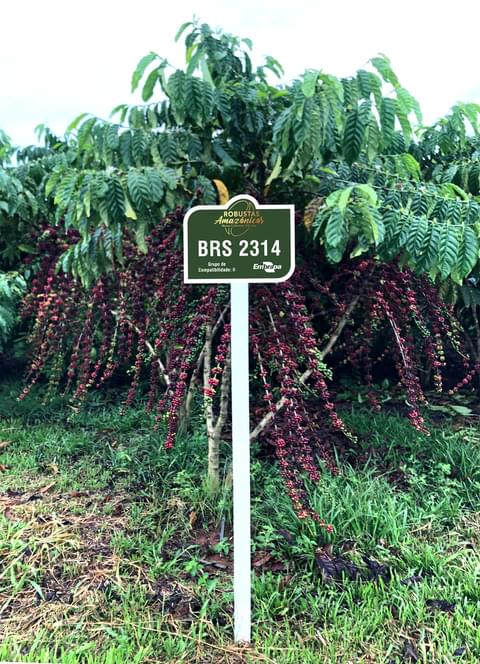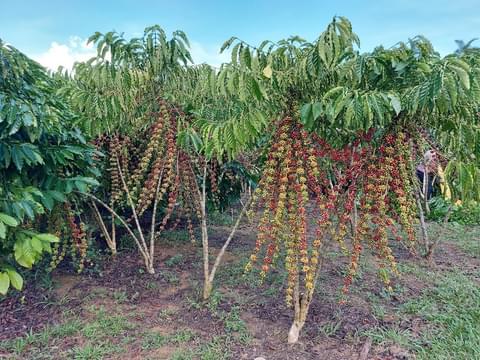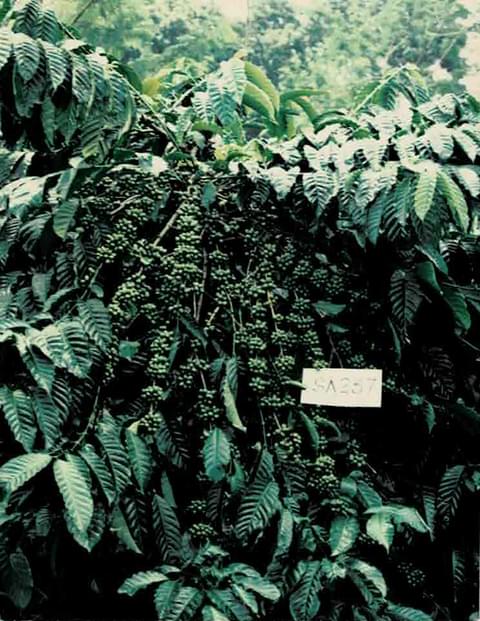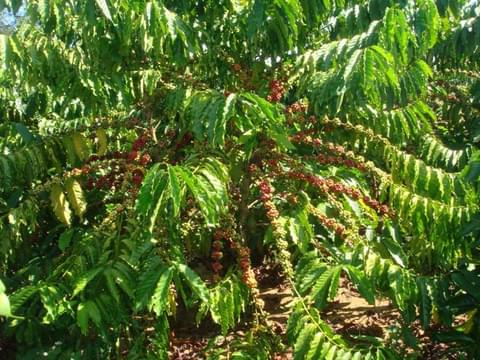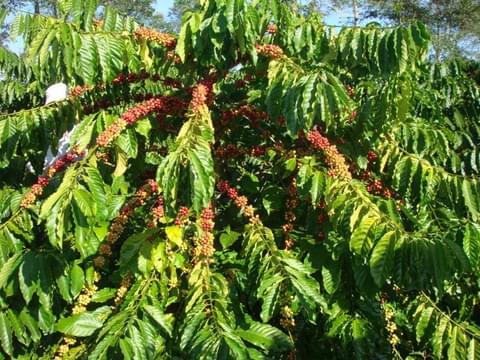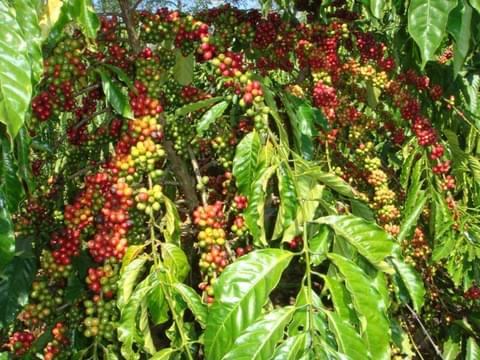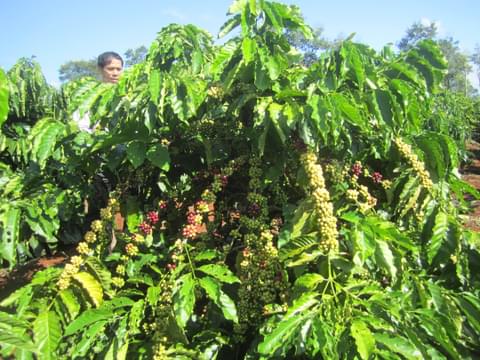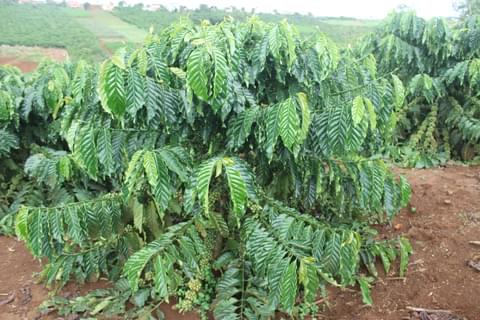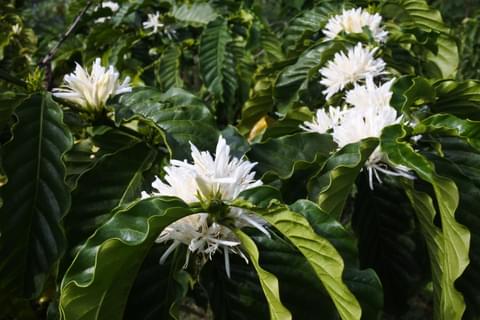
Robusta
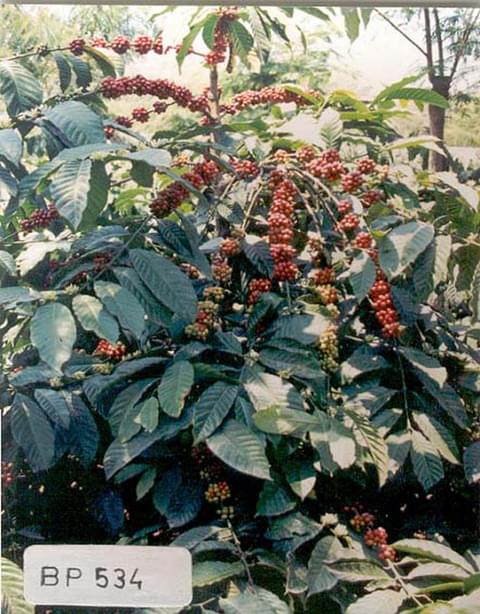
BP 534
Most commonly grown clone by farmers in Indonesia; suitable for cultivation under agroforestry systems.
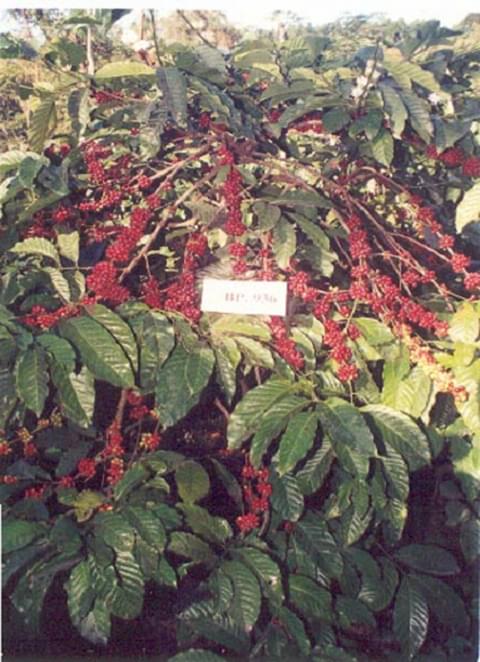
BP 936
Wide adaptability to different environments, with optimal productivity in areas with wet climates; suitable for cultivation under agroforestry systems.
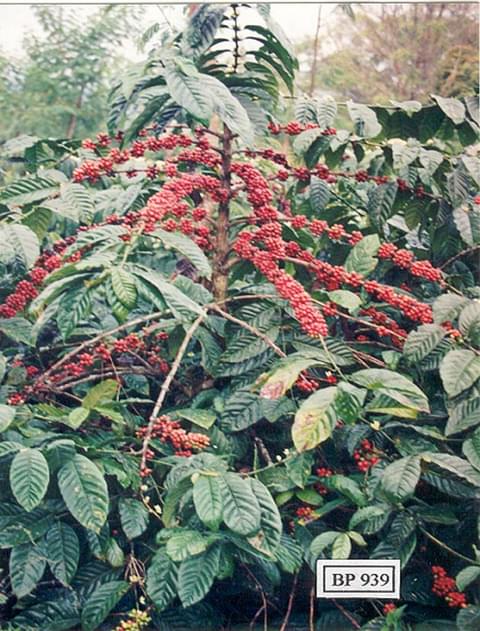
BP 939
Wide adaptability to different environments that produces best in areas with dry climates; suitable for cultivation under agroforestry systems.
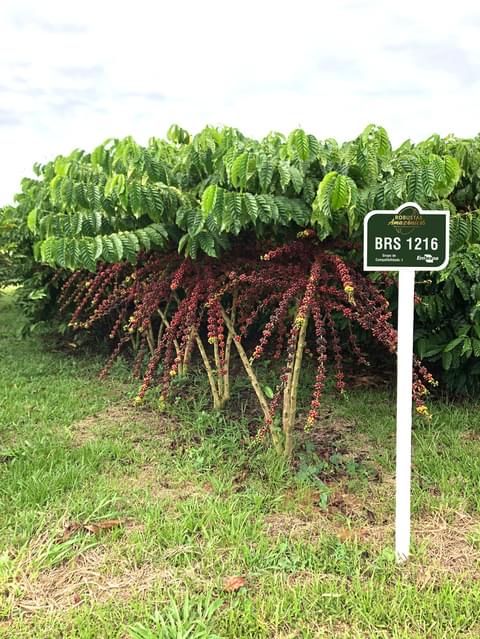
BRS 1216
Adaptable to the environments of the Western Amazon with high productivity. Plant structure suitable for mechanized harvesting. Resistant to nematodes and coffee rust.
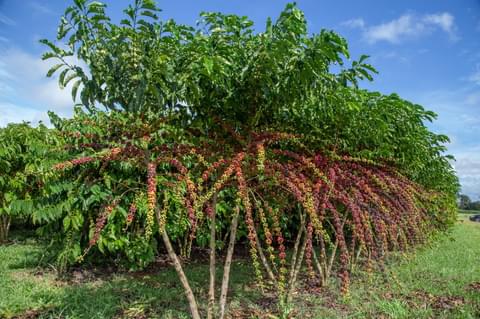
BRS 2299
Plant structure suitable for mechanized harvesting. Stands out for its tolerance to the root-knot nematode _Meloidogyne sp_.
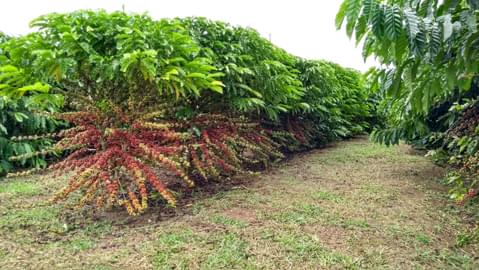
BRS 2357
Compact canopy, which allows for densification. Short stems allow one additional harvest before renewal.
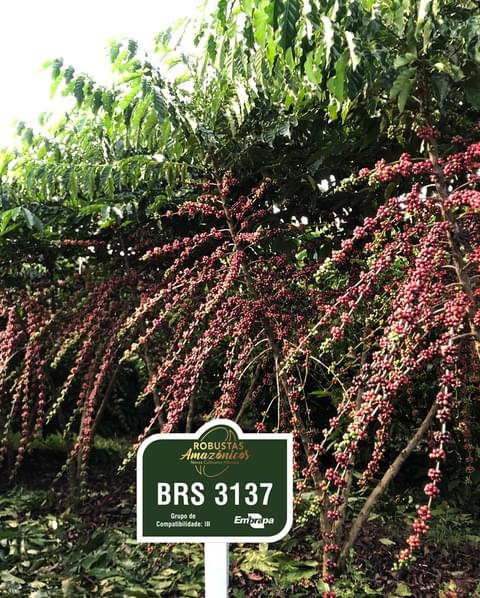
BRS 3137
Recognized for its rusticity, presenting good vegetative and productive characteristics in dry conditions and low-fertility soils.
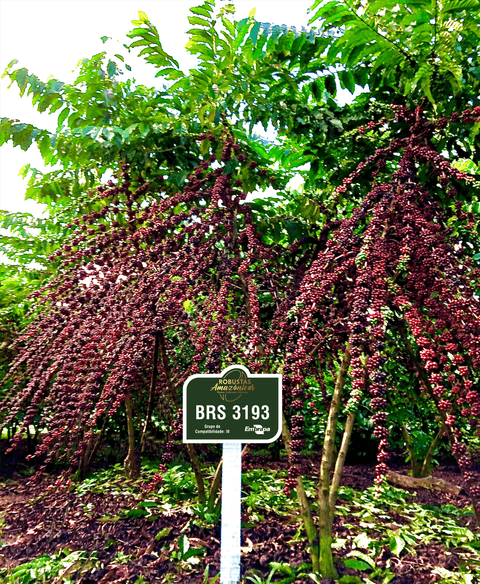
BRS 3193
Long primary branches. Production peak in the second or third commercial harvest due to its initial growth, which reduces the biannual production of the crop by compensating for lower yields of other clones.
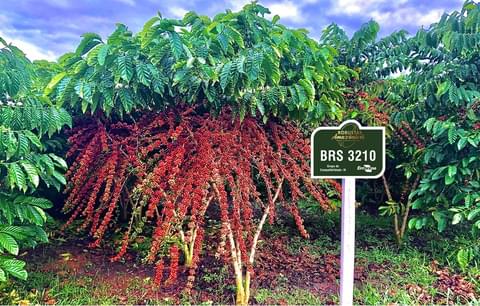
BRS 3210
Good adaptability and stability in the environments of the Western Amazon. Good productivity and bean size.
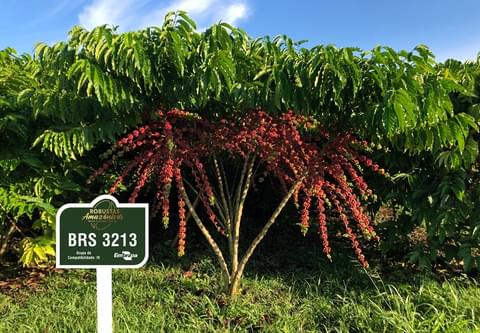
BRS 3213
Adaptable to the environments of the Western Amazon recognized for good productivity and bean size.
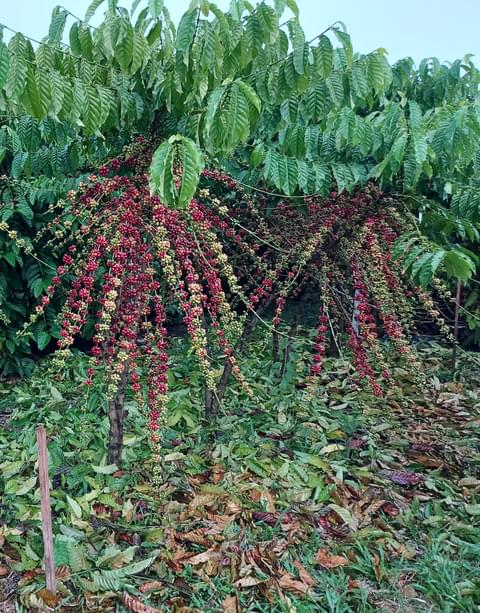
BRS 3220
Adaptable to the environments of the Western Amazon, recognized for good productivity and bean size.
INIFAP 00-24
Clon 24Compact plant grown under the conditions of the Chiapas coast in Mexico. Reduced plant size lends itself to higher yields in dry conditions and differentiates it from any other clone.
INIFAP 00-28
Clon 28Tall plants with large and numerous leaves and fruits; highest-yielding clone for the conditions of the coast of Chiapas, Mexico.
INIFAP 97-14
Clon 14Tall growth, tendency to form plants with more than three productive stems and good yield of cherries. Very susceptible to stem borers and anthracnose.
INIFAP 97-15
Clon 15Tall growth, tendency to form plants with more than three productive stems. Good yield potential, wide range of adaptation to the climatic conditions of the coast of Chiapas and Veracruz, Mexico.
Perdenia
Old RobustaVigorous, wide-spreading, grow into moderately large trees. High-yielding, beans relatively small in size.
Sln.1R
S.274, CxR (Congensis x Robusta)Plants that are very vigorous and grow into moderately large trees.
Sln.2R
Balehonnur Robustas, CxR (Congensis x Robusta)Plants that are very vigorous and grow into moderately large trees and produce large beans.
Sln.3R
CxR (Congensis x Robusta)Compact plant stature with good yielding potential, suitable for high-density planting.
